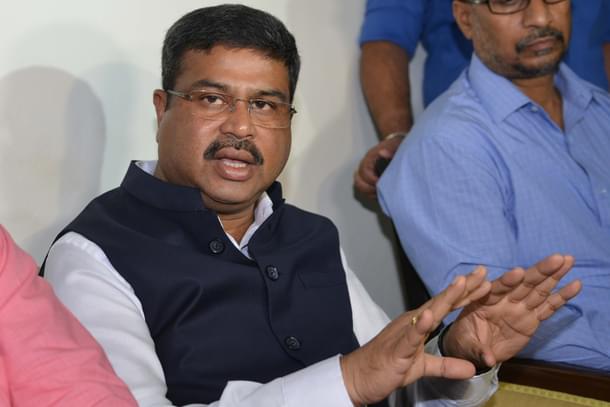Business
Oil Imports: India Gears Up To Play Hardball With Suppliers Over Pricing
Gireesh Chandra Prasad
Oct 11, 2017, 11:16 AM | Updated 11:16 AM IST
Save & read from anywhere!
Bookmark stories for easy access on any device or the Swarajya app.


After telling Organization of the Petroleum Exporting Countries (OPEC) members on Sunday that India has other options to buy oil at competitive prices, New Delhi is set to play hardball with its traditional suppliers from the Middle East on pricing.
India is reworking its import strategy by stepping up the share of short-term contracts to take advantage of the bear market and is exploring long-term supply deals at discounted price with its newest oil trade partner, the US, the re-entry of which in global oil markets last year has stepped up competition among suppliers.
“The economics of oil is very dynamic. We have some long-term contracts with the Middle East (suppliers) which we will continue with. Wherever we get competitive prices, we will buy. Price is very sensitive to us,” Oil Minister Dharmendra Pradhan said at a press conference.
In the medium term, India’s negotiating power on oil will get extra muscle when its under-construction liquefied natural gas (LNG) import terminals will start meeting part of its energy requirement in transportation, power generation and in fertiliser production. Two LNG terminals of 5 million tonnes each are coming up at Ennore in Chennai and at Dhamra in Odisha.
The likely expansion of the electric vehicle industry too is expected to give India extra negotiation power in its oil trade.
Pradhan had last Sunday told Sanusi Mohammed Barkindo, the visiting secretary general of OPEC, that New Delhi has other buying options, an Oil Ministry statement said on that day.
Pradhan’s message to the 14-member producers’ grouping urging “responsible pricing” came after the first shipment of US crude reached Indian Oil Corporation's Paradeep refinery on 2 October at a $2 per barrel discount compared to Dubai crude. OPEC accounts for 86 per cent of crude oil, 75 per cent of gas and 95 per cent of liquefied petroleum gas (LPG) that India imports.
It is economics that is driving purchase decisions as a discount of $2 a barrel could bring huge gains, said an Indian Oil Corporation official on condition of anonymity.
“Whatever can be saved in the price of crude, automatically goes to the refiner’s bottom line as crude accounts for the biggest cost in refining business,” said the official. Indian state-owned refiners have already placed a cumulative order 7.85 million barrels from the US.
The entry of the US in the oil exports market has increased competition among suppliers, said Richard Joswick, managing director-oil group, PIRA Energy, a forecasting and analytics unit of S&P Global Platts.
“The US entering the global crude export market, along with the surging growth in US shale oil production, will result in one of the largest changes in oil trade in many years. In a few years time, the US gross exports should hit 3 million barrels per day or more. That would put it ahead of most of the OPEC countries,” said Joswick.
Experts also said that a persistent oversupply situation has rendered crude oil a buyer’s market, curtailing the ability of OPEC members to influence pricing by adjusting supplies. Recent efforts of cutting output by OPEC has also failed to prop up prices as US shale producers are continuously adding more output to the market.
Rahul Prithiani, director of Crisil Research, said that countries like India, China and Japan have raised their imports of US crude in recent months.
China imported an average of 100,000 barrels of crude a day from the US during the first five months of 2017, 10 times the level for the same period last year, increasing its share of US imports to 2 per cent from 0.1 per cent last year, said Prithiani. In the same period, the share of Chinese oil imports from Middle East has declined to 41 per cent from about 47 per cent.
“With more competition in the market and weak demand growth, pricing will be competitive which is great for buyers like India,” he said.
(Mint)





